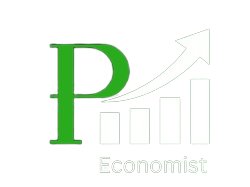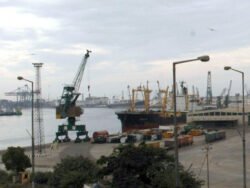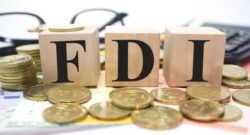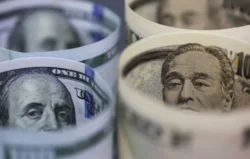Within an electoral cycle
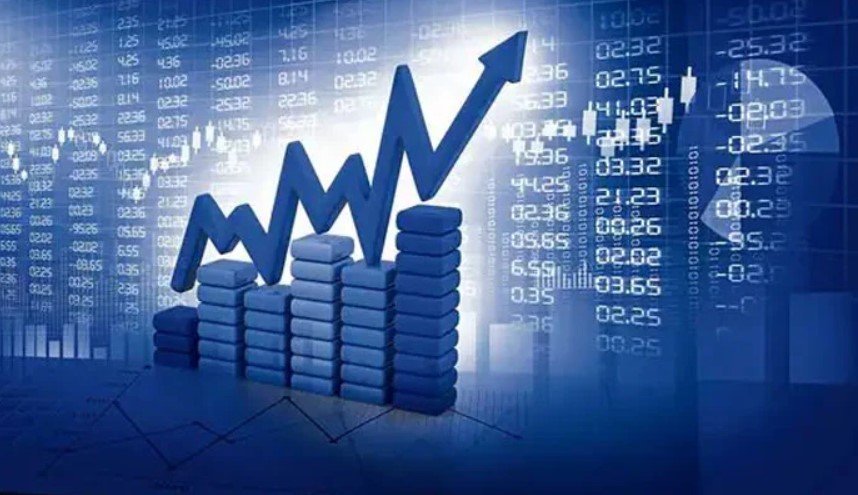
November 04, 2023
Published in: The News
Dear friends, in the year 2029, as we reflect on the past five years, it is highly satisfying to note how much has been possible within an electoral cycle.
We were well aware of the complex economic challenges we faced back in 2024. Short-term issues of debt and non-debt creating external inflows cast a dark shadow. Perennial high fiscal and quasi-fiscal deficits with sticky inflation, and long-term structural deficiencies mired the economy.
Deeper symptoms of weak productivity, declining investments, and over-regulation constrained the economy’s true potential. A slow pace of divestment to address inefficiencies in State Owned Enterprises (SOEs) had led to permanent bleeding of fiscal resources. A sluggish pace of reform was at the heart of all our follies. Understandably, 240 million Pakistanis and many pundits were less hopeful of a worthwhile recovery.
Pakistan needed a meaningful reform agenda that could materially alter the way the economy had gotten wired. Administrative measures in 2023 provided some tailwind for this effort. Border controls were improved, domestic hoarding was curbed, illegal FX market was tamed, and repair of Afghan Transit Trade somewhat controlled the informal market. The government pushed ahead with a prudent set of macroeconomic policy measures supported by a new Extended Fund Facility signed with the IMF in 2024. These efforts permeated macro stabilization as the economy moved through FY2025.
Emphasis was placed on pro-market economic policies and a market-based exchange rate regime. Policies of constraining expenditures, reducing the budget deficit for FY25 compared to the previous year, and pass-through of cost of service on the energy side were pursued. Inflation eased in FY25 with improved domestic supplies, a high base effect, and moderate non-energy global commodity prices. A moderate current account deficit helped the country’s reserves reach a more comfortable level. Adjustments in the economy continued till FY27.
We had learned from decades of experience that macroeconomic stabilization and fiscal adjustment alone would not be enough. We needed to complement the adjustment process with policy and structural reforms to induce a new aspect of dynamism to growth processes in the country. The core focus of reform was on ensuring external sector sustainability, putting public finances on a sound footing, improving agriculture and industrial efficiency, and creating export competitiveness. This work ensured that the economy didn’t yet again fall into a balance of payments (BOP) crisis with an acceleration in growth.
Pakistan’s debt reprofiling in early FY25 signaled to the world that external payments were now manageable. Debt reprofiling transactions modified the schedule of sovereign debt repayments to a later date without making any changes to interest payments. This was a necessary exercise with our bilateral and commercial partners. It included both public and IPP debts.
Improved debt sustainability and the gradual removal of external sector constraints paved the way for Pakistan’s access to non-debt-creating instruments. Foreign Portfolio Investment and Foreign Direct Investment (FDI) were drawn in brownfield projects as well as in the agriculture, information technology, petroleum and mines and mineral sectors.
Divestment of SOEs has been a hallmark of our structural agenda. It is great to see PIA flying in the private sector with many new aircraft, additional routes and expanded human resources. Divestment of two RLNG power plants, Guddu and Nandipur, management contracting of DISCOs’ retail business, and a number of stock market offerings put Pakistan on the map as a serious investment destination. Pakistan has finally settled its dispute with Etisalat of the $800 million pending payment. Work on divestment of Sui companies, HBFC, and the Utility Stores Corporation is in the advanced stages.
We have pursued a policy of zero leniencies for SOEs to work in a competitive environment, maximizing shareholders’ (the people of Pakistan) returns. We have gone much beyond the mantra of a better board of directors. We ensured that our relationship with SOEs was as commercial as possible with limited or no interference from line ministries. The country has moved beyond Reko Diq, with foreign and local interest in new mining projects. The creation of one-window facilitation has helped push investment; the harmonization of the investment regime complimented it. FDI has averaged $5 billion over five years — Alhamdulillah.
The government was mindful that its high fiscal deficits were reflected in an increase in inflationary pressure and a widening BOP deficit. As a responsible government, we undertook public-sector reengineering before asking for new monies through taxation reforms. We pushed credible reforms, better integrated with annual budgets, and anchored on spending targets.
Work was fast-tracked on public financial management to improve the efficiency and transparency of fiscal spending. Wide-ranging expenditure reforms were rolled out including, pension revamp; devolving expenditures to provinces; rationalizing the size of federal government; targeting and sharing the subsidy regime with provinces; and rethinking the 7th NFC Award. The Planning Commission has done some preliminary work by rationalizing projects to critical infrastructure. On the taxation side, we have made some strides in thinking beyond the quick fixes. The number of active taxpayers is up by 50 per cent over the last five years and FBR tax-to-GDP is now close to 11 per cent — our work is far from over.
It was not an easy task to lay the foundations of a new energy economy. At a higher level, our thinking has been of receding the government footprint; creating a competitive market; and a differentiated tariff regime. We have moved away from government-guaranteed projects; and pushed for more indigenous sources and new digging for oil and gas.
A phenomenal achievement in targeting individual-level productivity has been to spread broadband connectivity in every corner of the country. More broadly, Pakistan’s economic expansion is grounded in productivity gains in the agriculture sector and some green shoots in manufacturing. Agriculture reforms focused on lifting crop yields, putting in place a food supply chain, tackling market imperfections, and reducing the role of the state in price settings.
The initial spurt in manufacturing was a result of utilization of the idle capacity of our textiles and engineering sectors as raw material availability improved; easing of liquidity; agriculture pick-up feeding into manufacturing and services sector growth; and increased world demand as monetary easing began in 2025.
Longer-term measures are also taking hold. Reduced borrowing needs of the government released resources for the private sector and thus crowded in private sector investment. Easing regulatory complexities, and improved energy efficacy have somewhat helped in reducing costs of doing business. The government also attempted to reduce corporate rates and GST as the tax net broadened. The ground has been prepared for intensifying endeavors to enhance disaster resilience, effectively combat climate change, and advance a circular economy to ensure sustainability.
Policymakers were well aware of channeling resources into productive and tradable sectors. De-incentivization of monies in three unproductive sectors — real estate, gold, and dollarization — has been undertaken, along with some deepening of the stock market However, we are far from solving the issues of a narrow manufacturing-cum-export base of the country, integration of our SMEs to the world, removing frictions, and market-shaping reforms through our regulatory agencies.
A structurally leaning agenda has sailed us to a point where growth in FY28 and FY29 has averaged at 6.0 per cent. This has not been a debt-funded or easy money recovery through fiscal largesse — but more endogenous in nature — and thus likely to be more sustainable. The work so far should lift the spirits of Pakistanis. Reasonable price stability has helped them with some control over their household budget. A growing economy has helped them find decent employment. May Allah help us touch every citizen’s life in a positive manner (Ameen).
